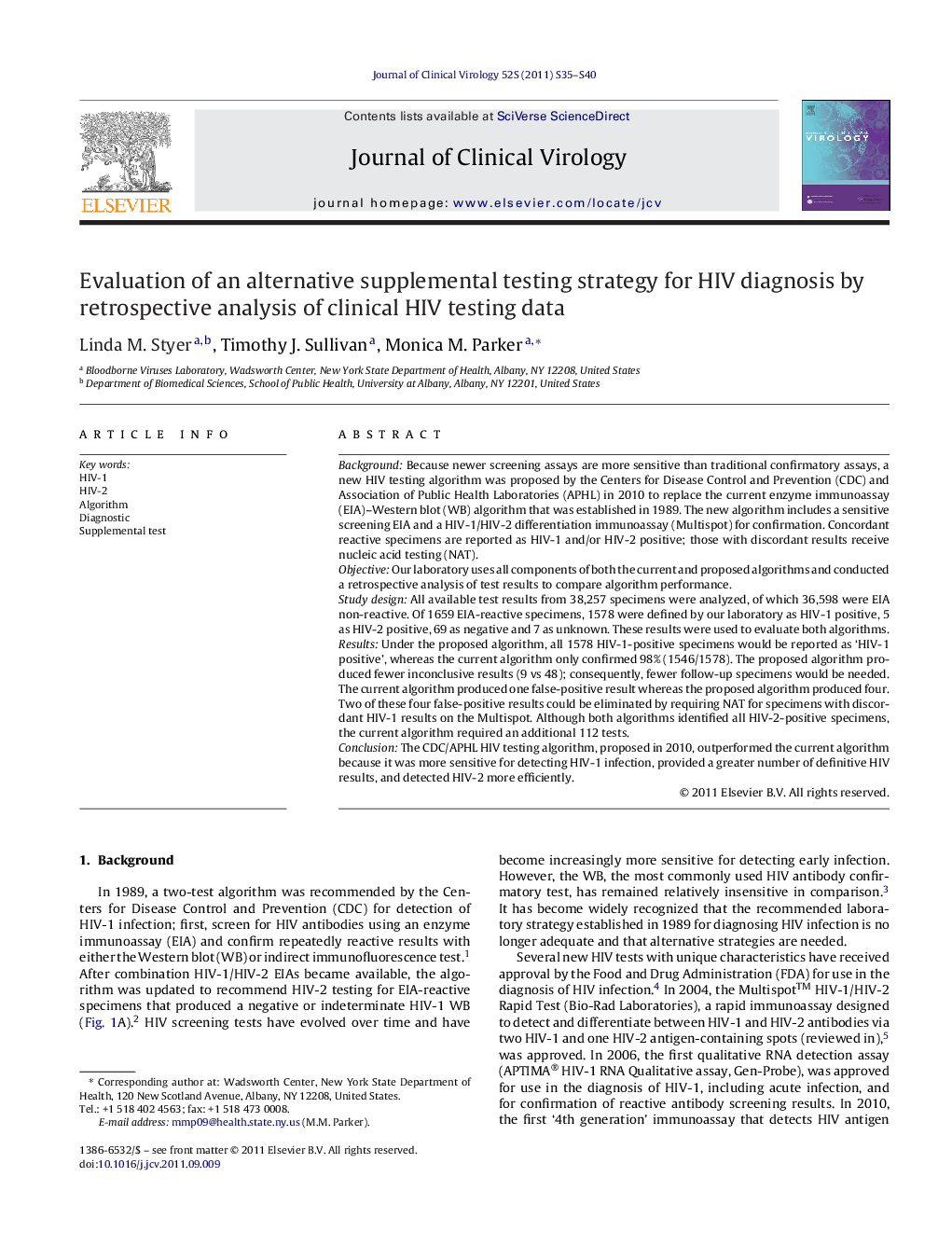| کد مقاله | کد نشریه | سال انتشار | مقاله انگلیسی | نسخه تمام متن |
|---|---|---|---|---|
| 3369641 | 1219045 | 2011 | 6 صفحه PDF | دانلود رایگان |

BackgroundBecause newer screening assays are more sensitive than traditional confirmatory assays, a new HIV testing algorithm was proposed by the Centers for Disease Control and Prevention (CDC) and Association of Public Health Laboratories (APHL) in 2010 to replace the current enzyme immunoassay (EIA)–Western blot (WB) algorithm that was established in 1989. The new algorithm includes a sensitive screening EIA and a HIV-1/HIV-2 differentiation immunoassay (Multispot) for confirmation. Concordant reactive specimens are reported as HIV-1 and/or HIV-2 positive; those with discordant results receive nucleic acid testing (NAT).ObjectiveOur laboratory uses all components of both the current and proposed algorithms and conducted a retrospective analysis of test results to compare algorithm performance.Study designAll available test results from 38,257 specimens were analyzed, of which 36,598 were EIA non-reactive. Of 1659 EIA-reactive specimens, 1578 were defined by our laboratory as HIV-1 positive, 5 as HIV-2 positive, 69 as negative and 7 as unknown. These results were used to evaluate both algorithms.ResultsUnder the proposed algorithm, all 1578 HIV-1-positive specimens would be reported as ‘HIV-1 positive’, whereas the current algorithm only confirmed 98% (1546/1578). The proposed algorithm produced fewer inconclusive results (9 vs 48); consequently, fewer follow-up specimens would be needed. The current algorithm produced one false-positive result whereas the proposed algorithm produced four. Two of these four false-positive results could be eliminated by requiring NAT for specimens with discordant HIV-1 results on the Multispot. Although both algorithms identified all HIV-2-positive specimens, the current algorithm required an additional 112 tests.ConclusionThe CDC/APHL HIV testing algorithm, proposed in 2010, outperformed the current algorithm because it was more sensitive for detecting HIV-1 infection, provided a greater number of definitive HIV results, and detected HIV-2 more efficiently.
Journal: Journal of Clinical Virology - Volume 52, Supplement 1, December 2011, Pages S35–S40